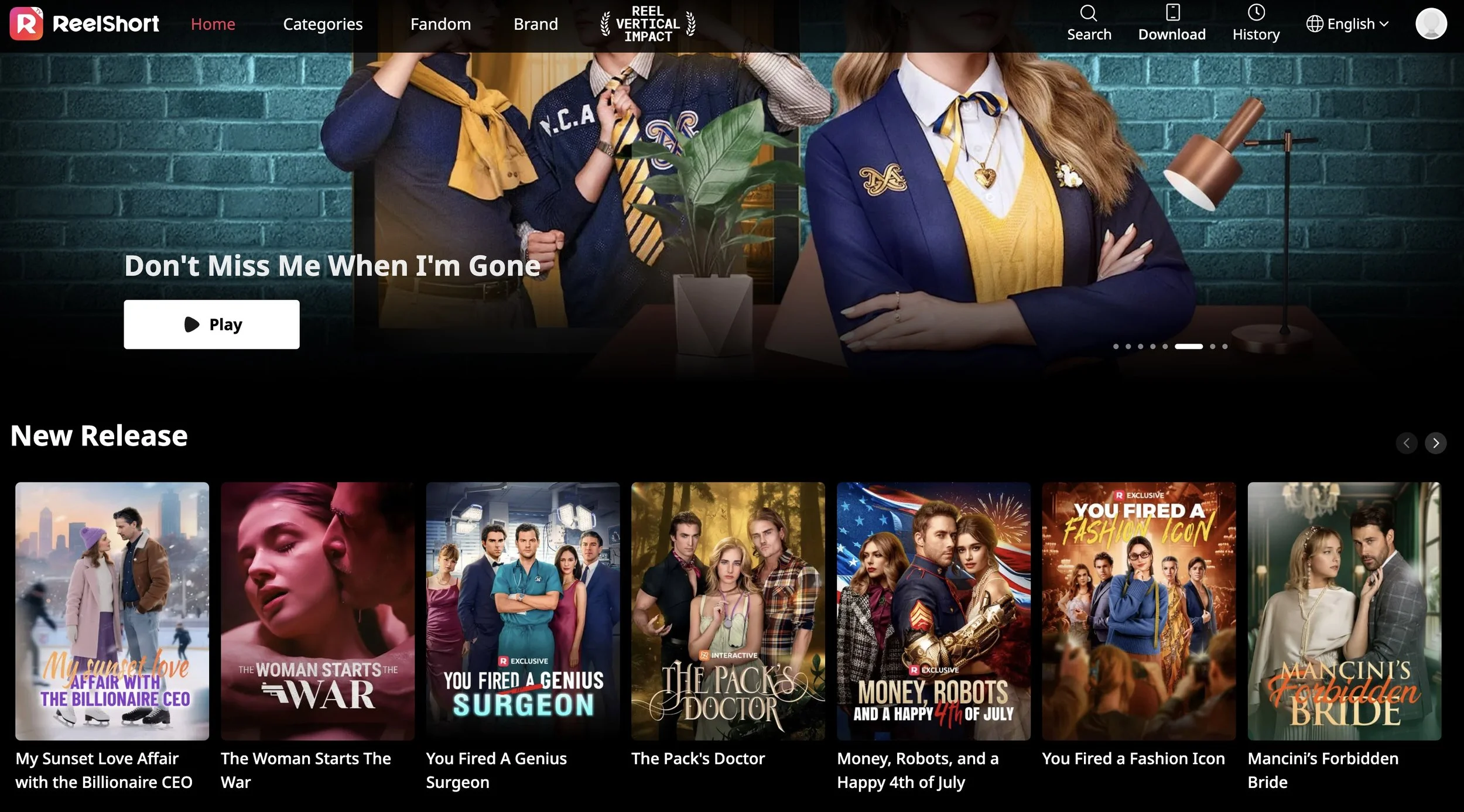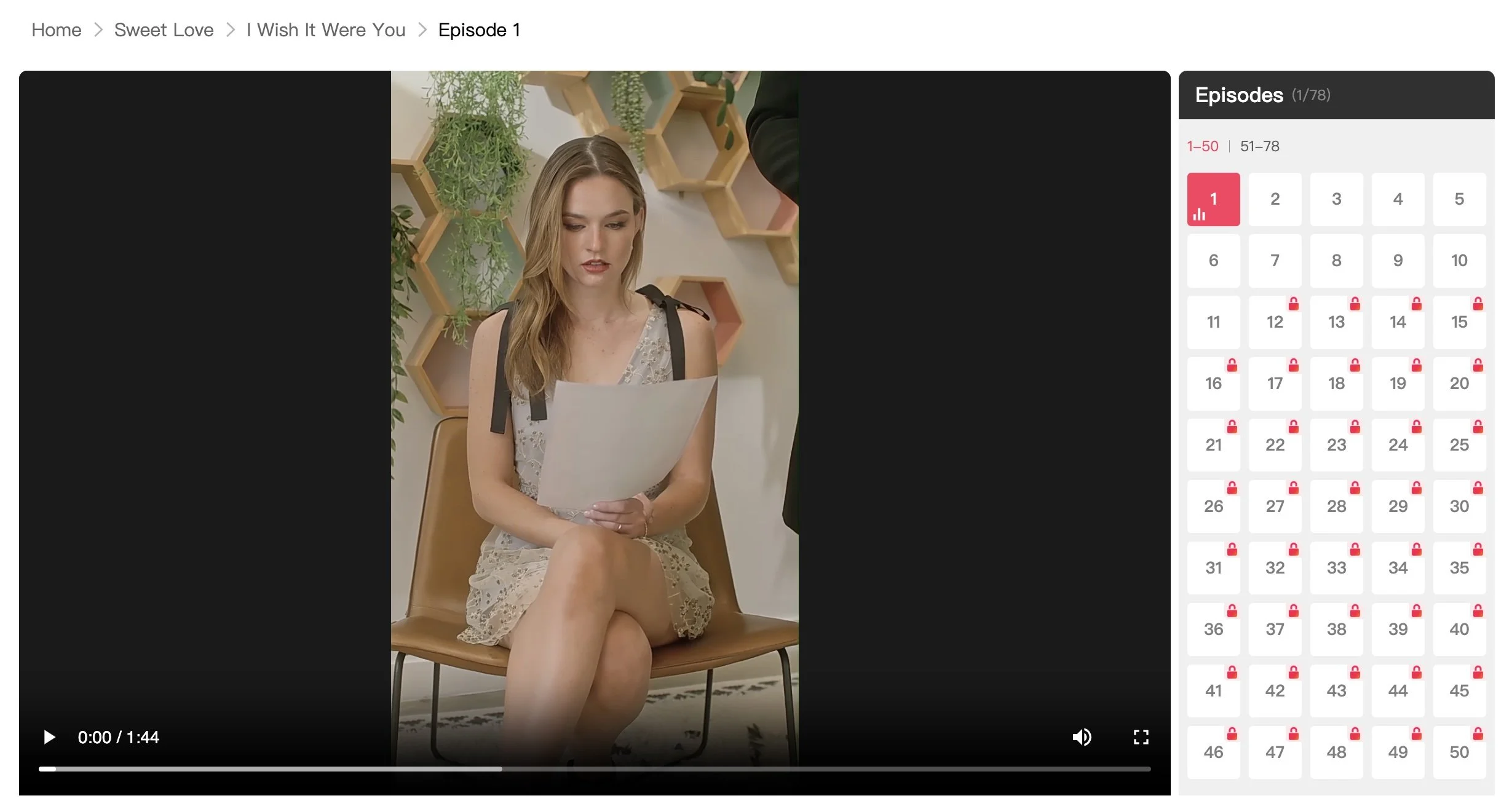Micro Dramas: From Pocket Dreams to a Billion-Dollar Industry
The Riveter was my first short film, re-cut and turned into a mini-series 13 years ago.
When I was 18, I wrote and directed my first film - a 1940s period drama set in wartime Britain. It was a love triangle exploring the complexities of interracial relationships, a bold choice for a teenager perhaps, but it felt important. Not just for representation, but for form. I wasn’t just trying to make a film - I was experimenting with something I called a Pocket Drama.
The idea was simple: take everything I loved about cinema: character, story, tension, release, and condense it into something short, digestible, and made for mobile phones. Think episodes under 5 minutes. Something you could watch on your phone in bed, on the bus, or between classes. A short drama series in your pocket (see what I did there?)
At 21, I finally re-cut and uploaded the pocket drama to YouTube. It wasn’t perfect, but it was heartfelt. And it marked the beginning of what has now become one of the most exciting transformations in storytelling.
Fast forward to 2024, and the numbers are staggering: Chinese Micro Dramas - a short-form storytelling format, once dismissed as “content” - officially outpaced the Chinese box office, generating $6.9 billion in revenue in a single year.
So now the question becomes:
Will the Chinese micro drama become the next biggest import to the U.S. and disrupt Western media entertainment?
These pieces aren’t difficult for audiences to engage with. You're often dropped straight into an emotionally charged moment, mid-conflict or mid-reveal, and just like that, you’re hooked. It’s a format that borrows from soap operas and telenovelas - high emotion, fast pacing, big reveals - only optimised for the scroll.
Unlike traditional film and TV, micro dramas operate on lean budgets. Many use unknown actors, limited locations, and tight production schedules - sometimes shooting entire storylines in days, even hours. The result? Stories that are faster, cheaper, and easier to scale.
And the real power lies in the data.
Apps like ReelShort, DramaBox, and Good Short have created ecosystems where creators can track viewer behaviour in real time. Audience retention, episode drop-off rates, skip behaviour - it's all there. And unlike film or TV, you can actually pivot mid-series to align with what your audience wants. It’s like a live feedback loop. A temperature check. A low-risk way to test storylines, characters, even genres, before going all-in.
What’s even more fascinating - and essential to the format’s success - is how strategically these dramas are marketed.
Companies like DramaBox produce vertical videos, offering free episodes and then it’s subscription based revenue.
A major part of micro drama growth has been fuelled by hyper-targeted campaigns, particularly toward women aged 25 to 35. It’s not just about making content, it’s about knowing exactly who you're making it for. And that’s not new.
When cinema first rose to popularity in the early 1900s, films were aimed squarely at the working classes. Predominantly, women (typically housewives) were the main patrons, often attending films during the day as a form of affordable escape. This gave birth to what came to be known as the “woman’s film” - a genre rooted in emotional storytelling, relationships, moral dilemmas, and everyday drama. It began in the silent era and never truly went away.
Micro dramas are a modern evolution of that genre - accessible, emotional, built to be consumed in stolen moments between work, childcare, or commutes. And the platforms know this. They’re not casting a wide net, they’re being surgical. Targeted. Analytical.
It’s not just storytelling. It’s project management with storytelling attached.
So if I could give any advice to young, aspiring filmmakers - it would be this:
Stop chasing traditional models.
Forget stressing over film festival circuits or spending years trying to raise money through outdated systems. The tools are in your hands. Cameras are more accessible than ever. Your audience on the other side of the phone. You’re already consuming vertical videos every day through TikTok, YouTube Shorts, and Instagram Reels. Now flip the script and become the creator.
Grab your friends. Shoot in real locations. Create your own micro drama studio.
Because here’s what happens next:
Fashion brands will start offering costumes to feature their latest collections.
Heritage homes and unique locations will open their doors, excited to host small, efficient productions.
Advertisers will embed directly into your story - no ad breaks, just seamless integration. A drink placed on a counter. A dress worn in a pivotal scene.
Partnerships will follow audience. And audiences follow great stories, not big budgets.
The future isn’t waiting at a red carpet. It’s already scrolling past you.
The most expensive Netflix show to date is The Crown, with an estimated total budget of $648 million. Production scales like this are not something you can consistently produce.
Does this mean micro dramas pose a direct threat to streaming giants like Netflix, or even traditional cinema?
Not really — at least, not yet.
Micro dramas operate in a completely different space. They’re not here to replace grand narratives or cinematic universes. You don’t turn to ReelShort for the slow-burn drama of a prestige series or the visual spectacle of a $200M blockbuster. That’s not the point.
You go to micro dramas for something else entirely: a hit of emotion between tasks. A three-minute burst of suspense, heartbreak, or betrayal during your commute, your lunch break, or just before bed. It’s entertainment that fits into the cracks of your day, not the centrepiece of your evening.
Think of it like this:
You watch Netflix for the plot.
You scroll through micro dramas for the pulse.
They’re parallel forms, not competitors. At least for now.
But what is disruptive is the shift in audience attention - and their willingness to invest time and emotion into lower-budget content, often created by new voices, from anywhere in the world. That, more than anything, is what the traditional industry should be paying attention to.
So, does this mean the end of television? Of Netflix? Of cinema?
No - not at all.
Micro dramas aren’t trying to take over the big screen. They’re carving out their own space. A space specifically designed for the fractured, flickering attention spans of modern life. They don’t compete with a 10-part series or Oscar-bait films. They compete with dog videos (and don’t get me wrong, I love a good dog video).
That’s the real shift: micro drama apps pose a more direct threat to social media than to Hollywood, because they’re reprogramming what we do with our “scroll time.”
Instead of passive thumb-flicking, viewers are engaging with stories. Real narratives. Short-form drama is becoming the new way to wind down before bed.
That said, it would be a huge oversight for platforms like Netflix not to take note. Because while micro dramas may not be replacing full-length shows, they are reshaping how audiences consume content. The phone screen is now the primary screen for billions of users worldwide. Attention spans are shorter. Viewer behaviour is more fragmented. And the appetite for something quick, emotional, and compelling has only grown.
If Netflix and other streaming giants were smart, they'd be slicing their existing IP into micro drama spin-offs - prequels, side plots, character diaries - designed specifically for vertical scroll and casual consumption. If your audience doesn’t have 45 minutes for an episode, why not serve them 45 seconds of narrative momentum?
To put it plainly:
Micro drama vs. film or television is like comparing street food to a Michelin-starred restaurant.
Both are delicious. Both take skill. Both serve different appetites.
You might not book a fine dining reservation every day.
But a killer bao bun on your lunch break? Unbeatable.
There’s room at the table for both.
And if you’re curious where it all began for me, here’s that first pocket drama I made back in the day:



